Located on the eastern outskirts of Changsha city, the world-famous Han tomb of Mawangdui is one of the most fascinating attractions in hunan province. Read More
Ancient Gateway Bears Witness to Centuries of War and Disaster
It has been said for centuries that whoever controls Jianmenguan controls the gate to Sichuan province. Read More
The Analects of Confucius, Thoughts of Confucius
The Analects of Confucius is famed as the collection of the words and deeds of Confucius and has greatly influenced the culture of China and neighboring nations as the most cherished scripture of Confucianism. According to most traditional accounts, Confucius never wrote down his teachings. They were passed down verbally and later put in writing, and not necessarily in a very systematic way. The Analects is widely regarded as the most dependable record of his various sayings and conversations.
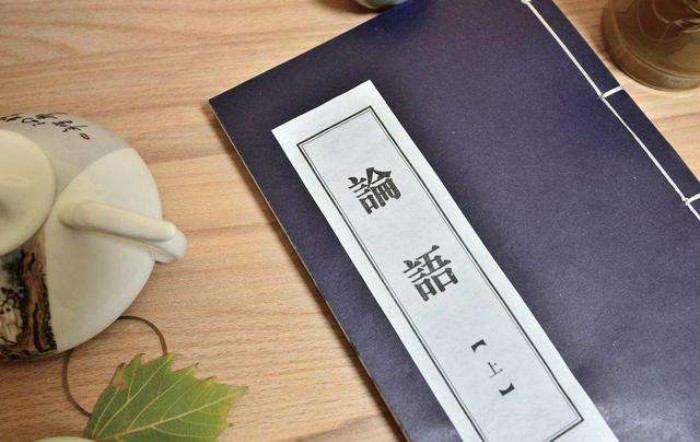
Confucius
Confucius is recognized as China’s first and greatest teacher, and his ideas have been the fertile soil in which the Chinese cultural tradition has flourished.

Confucius (551-479 BCE) was born in the ancient state of Lu into an era of unrelenting, escalating violence as seven of the strongest states in the pro to-Chinese world warred for supremacy. The landscape was not only fierce politically but also intellectually. Although Confucius enjoyed great popularity as a teacher, and many of his students found their way into political office, he personally had little influence in Lu. And so he began to travel from state to state as an itinerant philosopher to persuade political leaders that his teachings were a formula for social and political success. Eventually, his philosophies came to dictate the standard of behavior for all of society–including the emperor himself.
Contributions
The thoughts of Confucius has been the bedrock of Chinese main culture, and has brought influence to people’s mind and behavior even today. It is an important window to grasp Chinese culture to have a good understanding of Confucius.
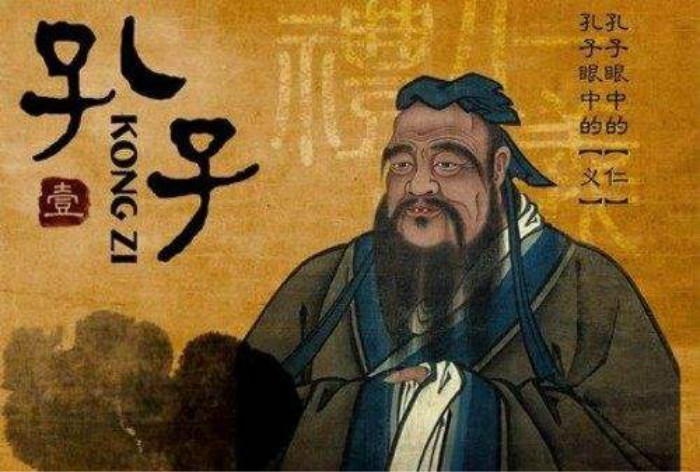
He maintains the idea that everyone has the right to be educated, and that education should be offered to all classes. While spreading the spirit of being insatiable in learning and tireless in teaching, he strives for educating students in accordance with their aptitude by adopting an elicitation method of teaching.
As the founder of Confucianism, he contributed greatly to the development and success of traditional Chinese culture. He established benevolence and rites as the core of his theory. Benevolence is an ethical system as well as a moral realm, the core of which is the advocacy of love for humans.
Thoughts of Confucius
In the Analects, Confucius presents himself as a “transmitter who invented nothing”. He put the greatest emphasis on the importance of study, and it is the Chinese character for study (or learning) that opens the text. In this respect, he is seen by Chinese people as the Greatest Master. Far from trying to build a systematic theory of life and society or establish a formalism of rites, he wanted his disciples to think deeply for themselves and relentlessly study the outside world, mostly through the old scriptures and by relating the moral problems of the present to past political events (like the Annals) or past expressions of feelings by common people and reflective members of the elite (preserved in the poems of the Book of Odes).
In times of division, chaos, and endless wars between feudal states, he wanted to restore the Mandate of Heaven “天命” that could unify the “world” and bestow peace and prosperity on the people. Because his vision of personal and social perfections was framed as a revival of the ordered society of earlier times. Confucius is often considered a great proponent of conservatism. But a closer look at what he proposes often shows that he used (and perhaps twisted) past institutions and rites to push a new political agenda of his own: a revival of a unified royal state, whose rulers would succeed to power on the basis of their moral merit, not their parentage;these would be rulers devoted to their people, reaching for personal and social perfection.
Such a ruler would spread his own virtues to the people instead of imposing proper behavior with laws and rules. One of the deepest teachings of Confucius may have been the superiority of personal exemplification over explicit rules of behavior. Because his moral teachings emphasise self-cultivation, emulation of moral exemplars, and the attainment of skilled judgment rather than knowledge of rule, Confucius’s ethics may be considered a type of virtue ethics. His teachings rarely rely on reasoned argument, and ethical ideals and methods are conveyed more indirectly, through allusions, innuendo, and even tautology. This is why his teachings need to be examined and put into proper context in order to be understood.
Yang Guifei, One of the Four Beauties in Ancient China
Yang Gui Fei is one of the most beautiful ladies of ancient China, but she got the most unfortunate compare to those three.Yang Gui Fei was named Yang Yuhuan, she was a daughter of a nobleman in the little village.When her was 16 years old, her father sent her into the palace to be a wife of the emperor’s son.
After she got into the palace, her beautiful appearance was well-known. After the Emperor Tang Xuanzong heard, he went to his son’s palace to see this girl; once Xuangzong saw Yang Yuhuan, he suddenly fell in love with her and accommodated her into his palace. In that time Xuanzong was 56 years old and Yang was 22 years old.Yang was not only beautiful but also very clever,and she learned fast and talented in music and dancing.She was said to have”a face that would make all flowers feel shameful”.
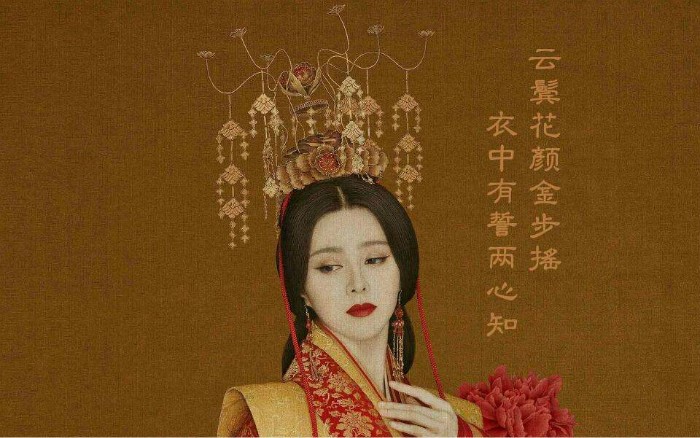
Eventually,the emperor began to neglect state affairs. She adopted An Lushan as her son and helped her brother win power at court. The power struggle eventually over controlled by the central government. Therefore,the emperor fled the capital before the rebels occupied.The loyal soldiers were angry and blamed Yang Yuhuan and her brother for the rebellion.Finally,the emperor was forced to order their execution to kill her.
Because Yang guifei gets heavy favour, her brother gives a high official, even distant brother Yang zhao, be a market well scoundrels originally, because of good plan, xuanzong and Yang’s sisters gamble, make Yang zhao calculate gamble account, give a name to the country zhong, the body holds the branch doctor in wait for more than 10 posts, control a government. Xuanzong visited huaqing pool and took five families of the Yang family as his retinue. Along the way dropped jewelry everywhere, glittering, its luxury is unparalleled. The Yang family, married two princesses, two infanta, xuanzong also close for the Yang family royal and che shujia temple tablet.
Xi Shi, One of the Four Beauties in Ancient China
Xi Shi was said to have lived during the end of Spring and Autumn Period in Zhuji(诸暨),the capital of the ancient State of Yue.She was said to be “so beautiful as to make swimming fish sink”.There also goes a saying ”Beauty lies in the lover’s eyes”In chiese,we can say Xi Shi lies in the lover’s eyes.
King Goujian of Yue was once imprisoned after a defeat in a war by King Fuchai of Wu.The state of Yue later became a tribulatory to Wu.Secretly planning his revenge,Goujian’s minister Wen Zhong suggested training beautiful women and offering them to Fuchai as a tribute.His other minister,Fan Li,found Xi Shi and Zheng Dan,and gifted them to Fuchai.
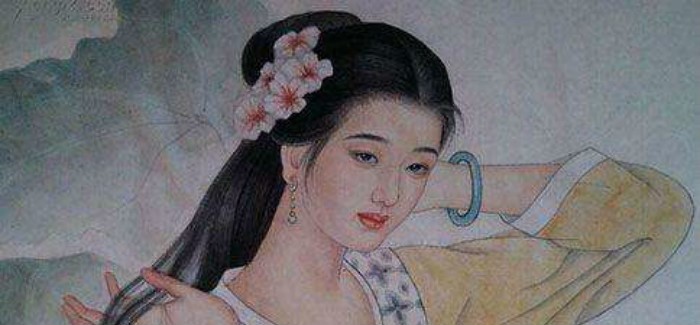
One day when she went to a stream to wash clothes and the fish in the water saw her and fell down from the surface of the water after being astonished by her beauty. This is the legend, but the fact is Xi Shi was sent to the State of Wu to seduce the ruler for her own state. Finally, the ruler of the State of Wu was defeated by the State of Yue.
Bewitched by the beauty of Xi Shi,Fuchai forgot all about his state affairs, on their instigation,and killed his best advisor,the great general Wu Zixu.In 473 BC Goujian launched his strike and put the Wu army to full rout.King Fuchai lamented that he should have listened to Wu Zixu,and then committed suicide.
There is another well-known figure of unknown origin,probably fictional and parodical,named Dong Shi (东施).The “Dong” in her name means “east” contrasting to Xi Shi’s “Xi”,which means “west”.Apart from her name,she is said to be the exact opposite of Xi Shi in being extremely ugly and,in modern depictions,fat.This in turn has created the saying “Dong Shi imitates a frown”,meaning to attempt imitating another work only to show up one’s own weaknesses.
Weaponry of Stone Age, the Earliest Weapons in China
In the Stone Age, conflicts between rival clans used sharp tools for production and hunting. Thus, the development of basic weapons has begun. The first weapons used were probably bows or spears, as they were easy to use in hunting. In archaeological research, a tomb was found with its skeleton pierced by an arrow, illustrating the shift from tools to weapons.
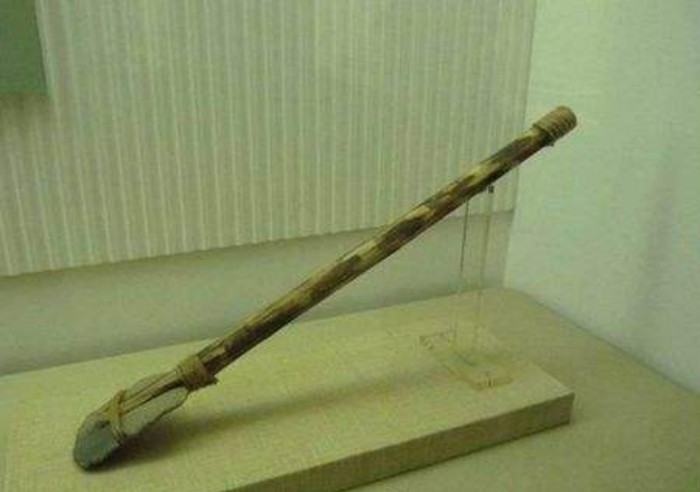
At that time, the stone axe was a very popular tool and one of the earliest weapons. Over thousands of years of evolution, it became thinner, sharper and harder, culminating in a tomahawk or throwing axe. It is not only a popular weapon, but also a status symbol. A jade tomahawk found in the tomb of a nobleman proves that in the early days of the era, artisans were already making ritual weapons — carved on its upper horn — an immortal mounted tiger, with birds at its lower.
The Stone Age is so named because it was a time of technological development and all tools were made of stone. With the progress of The Times and society, the development level of stone tools has been improved. Therefore, according to the shape and complexity of these tools, the Stone Age was divided into three phases — paleolithic, mesolithic and neolithic.
People of the Stone Age were able to make textiles and pottery, and developed agriculture and animal husbandry, which allowed them to continue to live in one place.
Paleolithic refers to the stage of human cultural development marked by the use of chipped stone tools. This period is a long time from 2.5 million to 10,000 years ago before the present era. It is generally divided into early, middle and late, roughly equivalent to the existence of three human species – homo habilis, homo erectus, early homo sapiens and late homo sapiens.
During this period, people made simple tools, mainly for hunting and gathering. Stone weapons are made of different stones. For example, basalt and sandstone are made into abrasives. Flint and flint are used as sharp weapons or tools. Bones, wood, antlers, and shells were also widely used as tools or weapons. Clay is made into pottery.
The Peking man found in zhoukoudian, Beijing, is just such a neolithic man. They use stone weapons and sticks to hunt wild animals, live mainly in caves and gather fruit for their stomachs. People knew how to use fire, as can be seen from the ashes, charred bones and marks left on the stones. Except for Peking man, lantian man, yuanmou man and upper cave man all lived in this period.
Weaponry of Iron Age, Iron Cannon, Iron Armour and Warships
Although in the western zhou dynasty (11th century bc-771 BC), weapons made of natural siderite, the earliest known iron wares in the world, were made. With improved craftsmanship, iron weapons became ubiquitous in the late warring states period, extending into the qin dynasty (221bc-206bc) and the han dynasty (206bc-220bc). However, because iron weapons have little external processing, they are corroded when unearthed, making them more difficult to study and providing less insight than Bronze Age iron weapons, which were protected by a thin oxide layer.
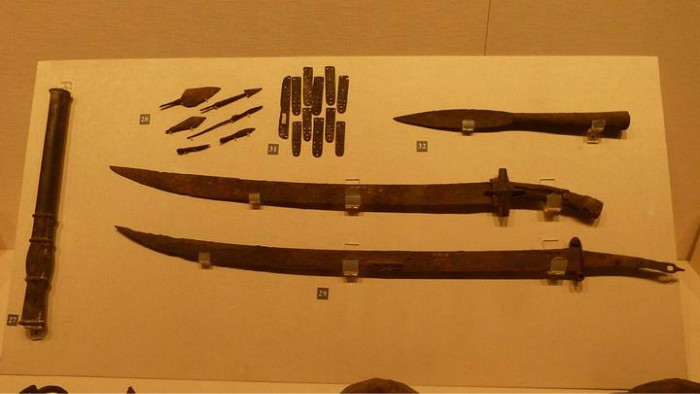
Cannons, or stone cannons, appeared in the late eastern han dynasty (25-220) and flourished during The Three Kingdoms period (220-280). When the enemy came, the garrison would put cannons on the gate. Turning to the lever, it threw the big stone parabolic over the wall and defeated the invaders. This is still reflected in Chinese chess – pieces representing cannons still follow the rule of attacking another piece only if there is a third in the middle.
With the rise of cavalry in the western han dynasty, there appeared a kind of rectangular shield that soldiers could hold with one hand. During the song dynasty (960-1279), it was tied to the left forearm of the cavalry and became round. Until the southern and northern dynasties (386-589), the long hexagon prevailed, with the shield facing vertically inward like a leaf. In battle, it can be held by hand or propped up on the ground with a stick.
During the western han dynasty, iron armor replaced leather armor and evolved into fine scales and plates. Scale armor displays a high level of technical know-how, with a set consisting of more than 2200 components. During The Three Kingdoms period, chainmail became popular to protect people from arrows. By the Ming dynasty, chainmail was gradually changing from heavy to light, but it could still withstand the blows of spears.
With the development of iron armour, not only soldiers but also horses were wearing iron armour. As a result, the halberd, used chiefly for stings and hooks, lost its place on the battlefield. The spear evolved into a spear, used only by cavalry and capable of penetrating.
The han dynasty was a critical period for the development of Chinese warships, large and small. The OARS of the western han and the rudders of the eastern han were brilliant achievements. Scull, a precursor to the modern propeller, improved efficiency by changing the way it jerks from side to side, front to back. The steering wheel provided the oar with the flexibility of its route, paving the way for European exploration. During the jin dynasty (265-420), large – scale warships stood out. It is recorded that there was a ship at that time. It had a large hull, 180 meters long, and could hold more than 2,000 people. At the top was a fixed wooden city, and the horse could gallop through four gates. During the sui dynasty (581-618), a very large ship more than 30 meters high was built, which could hold 800 people. Before the southern song dynasty, almost all armies used warships. Examples recorded are the 110 m tower, skirting board and wheel paddle.
Wang Zhaojun, One of the Four Beauties in Ancient China
Wang Zhaojun was said to be “so beautiful as to make flying geese fall”. Wang Zhaojun is perhaps the best known of China’s “political brides”. she entered the imperial harem during the reign of Emperor Yuan of Western Han (48-33 BC). The emperor chose companions from his vast harem of maidens by looking at their portraits. As a result of this practice, it had become the custom for palace ladies to offer large bribes to court artists to ensure that they painted a flattering likeness. Wang Zhaojun, however, was confident in her natural beauty and refused to pay money to court painter. As a result, she seemed to be the ugliest of all the palace ladies from her portrait, and thus never received the emperor’s favour.
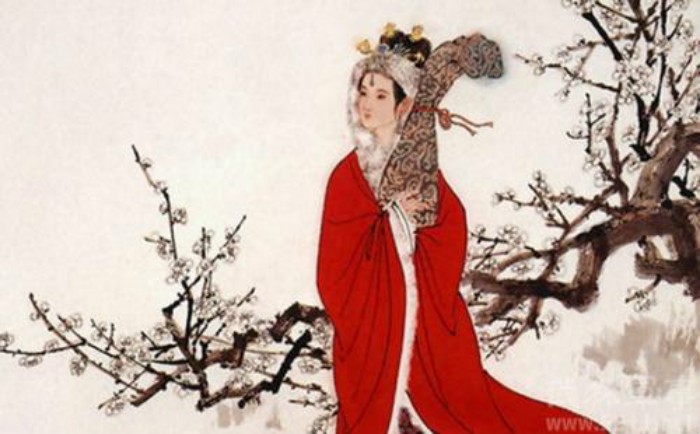
When the Xiongnu chieftain came to ChangAn, he told Emperor Yuan: “I wish to take a Han beauty as my empress”. To cement relations with this barbarous nation, Emperor Yuan agreed to the request. However,the emperor was unwilling to pick out a real beauty,and ordered to select an ordinary woman in the harem for the chieftain. When the unflattering portrait of Wang Zhaojun was sent to the emperor, he merely glanced at it and nodded his approval.
Her life became the story of “Zhaojun Departs the Frontier” (昭君出塞). Peace was maintained for over 60 years between China and the Xiongnu. However, China eventually lost touch with her and her descendants.
Since the 3rd century the story of Zhaojun had been elaborated upon and she had been touted as a tragic heroine. The Communist government of the People’s Republic of China uses her as a symbol of the integration of Han Chinese and ethnic minorities of China. Zhaojun Tomb still exists today in Inner Mongolia.
Diao Chan, One of the Four Beauties in Ancient China
Diao Chan, One of the Four Beauties in Ancient China
Diao Chan (c. third century, Three Kingdoms period), said to have “a face that would make the full moon hide behind the clouds”.Diao Chan is a singer of Wang Yun in the Eastern Han Dynasty,and she has beautiful appearance.When Eastern Han Dynasty manipulated by the traitor Dong Zhuo, she pray to God for helping her master Wang Yun. Wang Yun secretly promised Diao Chan to Lv Bu,but then to Dong Zhuo.Lv Bu was very young and handsome at that time,andDong Zhuo was an old hand at trickery and deception person. In order to win over Lv Bu, Dong Zhuo recognized Lv Bu as a son.However,they are all lecherous. Since then, Diao Chan began to drive a wedge between Lv Bu and Dong Zhuo.
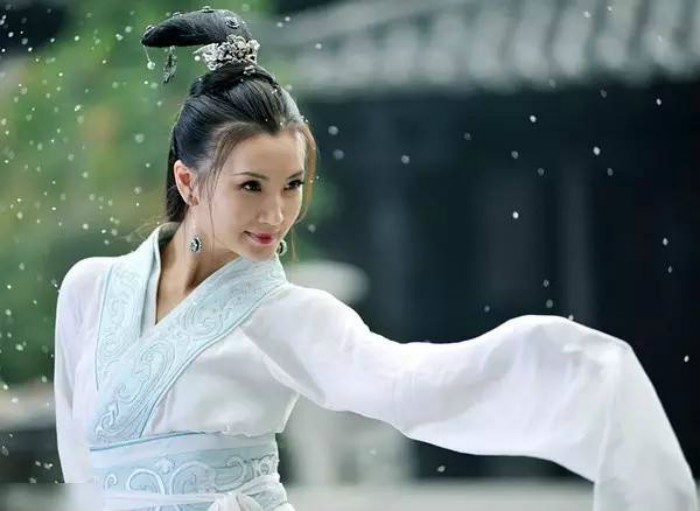
Lv Bu was very angry since Dong Zhuo married Diao Chao. One day, Lv Bu entered into Dong Zhuo’s house secretly and invited Diao Chan to meet. Diao Chan cry to Lv Bu for what Dong Zhuo did. When Dong Zhuo returned home and caught Lv Bu,he was very angry and grabbed spear to kill Lv Bu.Fortunately, Lv Bu escaped from death.Since then,there was suspicion and even downright hatred between them.After that,Wang Yun sucessfully persuaded Lv Bu to kill Dong Zhuo.
It should be noted that no historical accounts mention a person named Diao Chan. Moreover, “Diao” is not a common Chinese last name.
In “romance of The Three Kingdoms”, sable cicada is due to ten often wait on the chaos, refuge out of the palace, for the king permitted to take as a singer. The sable cicada sees the eastern han dynasty is manipulated by the treacherous courtier dong zhuo, in the month under the incense pray to heaven, wish to worry for the master. It happened to be seen by wang yun. Then, wang yun accepts sable cicada for adoptive daughter, set a chain of beautiful person plan, the relation that separates dong zhuo and foster son lv bu. Wang yun first betrogged diao chan to lu bu secretly, and then offered her to dong zhuo to be his concubine. Sable cicada married dong zhuo after lv bu ambiguous affection, deal between father and son two people.
In the 19th “cao cao fought in heavy combat in xiapis city, and lu bu died in the white gate tower”, lu bu was besieged by cao cao’s army, but diao cicada refused to break out of the siege by her husband alone, saying that they would “live together if they live together, and if they die, they will stay together until they die”. Lv bu was deeply moved and gave up Chen gong’s clever plan. He only made merry with sable cicada every day, ignoring the war at the front. He was finally captured and killed.
Ancient Football in China, Cuju in Ancient China
Ancient football (cuju) this is the ancient Chinese football, cuju is the oldest football game in the world. According to historical records, it appeared in the shang dynasty (16th century bc-11th century BC), and its equipment was a stone ball promoted by the army to build a strong physique among soldiers. During the han dynasty (206bc-220), it became more popular and was written into military science at the time. There are no fewer than 25 versions of the game. It is said that liu bang, the first emperor of this dynasty, was proud of his father, who was good at playing ancient football — cuju. In the southern song dynasty (1127-1279), the earliest football clubs or associations were founded and named “yuan she”. At that time, there appeared many literary works with the theme of cuju, which proved the prosperity of cuju. It was popular in all levels of society, folk or court, city or frontier. It is made up of adults and children, men and women. Although women in feudal times were inferior and excluded from many outside occasions, the playground seemed to be an exception, where they could be seen in public.
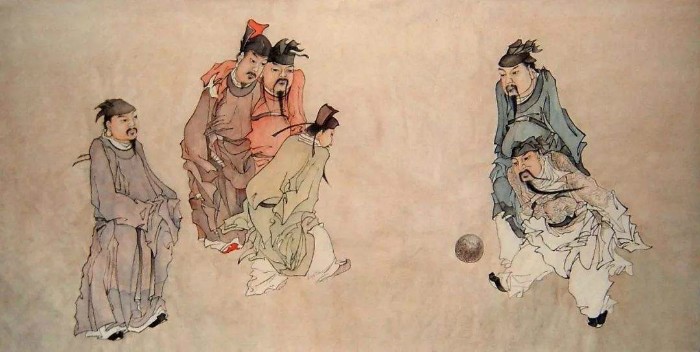
However, its decline may be due to the traditional concepts of peace and charity. Although cuju was originally a competitive game, people, especially the ruling class, tried to change its nature and make it a recreational activity.
Today, this sport has been included in the sixth national minority traditional sports games.
It is similar to football today. According to historical records, cuju was popular among Chinese people as early as the warring states period, and it became a way for soldiers to practice from the han dynasty. Cuju organizations and cuju artists appeared in the song dynasty, and cuju on ice became popular in the qing dynasty. Therefore, it can be said that cuju is a wonderful work of sports in ancient China.